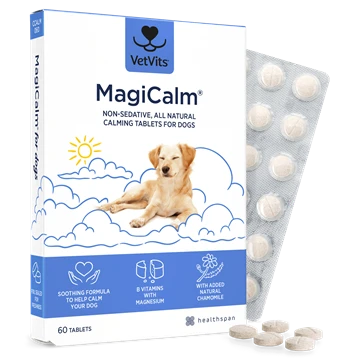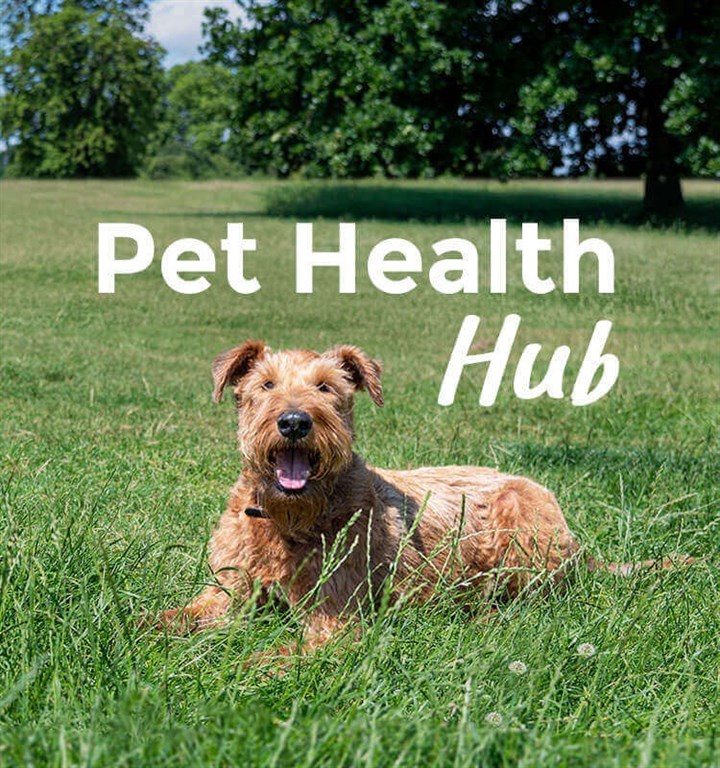Let’s be honest, even the most pampered, well-loved dog can have bad days. You could give them the world: gourmet food, endless cuddles, beautiful walks through quiet woods. But still, something feels off. Maybe it’s that tremble during car rides. The barking explosion every time the doorbell rings. Or those big, sad eyes watching you walk out the door - like they’re bracing for the worst.
🕒 6 min read
If you live with an anxious dog, you know this isn’t just “acting out.” It’s not them being difficult. It’s distress - and it's real.
But the good news is that there’s a lot you can do to support them. It doesn’t involve harsh training methods; instead, it's about learning their language, creating a safe, predictable world, and offering gentle, consistent support that makes them feel secure in their own skin.
What are the signs of anxiety in dogs?
Anxiety in our four-legged friends isn’t always easy to spot. Sure, you may notice some of the more obvious signs - barking, chewing, and accidents indoors. But long before those show up, your dog is already trying to tell you something. You just have to know what to look for.
Here are some common signs of anxiety that are harder to miss:
- Barking or whining that goes on and on
- Chewing furniture or scratching at doors when they’re left alone
- Toileting indoors, even though they’re house-trained
- Growling or snapping, especially when they feel cornered or scared
But anxiety can show up in more subtle ways, too. Things like:
- Licking their lips when there’s no food around
- Yawning or panting when they’re not hot or tired
- A stiff posture or tail tucked low
- Pacing the room or being unable to settle
- Avoiding eye contact or showing the whites of their eyes (what’s known as “whale eye”)
- Flopping onto their back in a submissive belly-up position, not for belly rubs, but to say, “please don’t hurt me”
You should also note that sometimes, that “zoomy,” hyper, over-the-top excitement can be anxiety in disguise. Many dogs who look like they’re bouncing with joy can be overwhelmed and unsure. However, context is key here, as zoomies (frenetic random activity periods) can also be normal playful behaviour.
Why is my dog anxious?
Whether it’s loud noises like fireworks, being left alone, or something that happened in their past, anxiety in dogs is complex and deeply felt.
Let’s look at some of the most common causes:
1. Separation anxiety
Some dogs just can’t cope with being left by their humans. They panic. And when they do, it often leads to destructive behaviour, like chewing, barking, or soiling the house. They’re not trying to be “bad.” They’re trying to survive being alone.
2. Noise sensitivity or environmental stress
Fireworks, thunderstorms, and even a dropped pan in the kitchen can feel catastrophic to a sensitive dog. Some dogs also get anxious in new places, around unfamiliar people, or when their routine changes.
3. Trauma or lack of socialisation
Dogs who’ve come from shelters or abusive backgrounds often carry trauma. Others may have missed crucial socialisation as puppies, leaving them unsure how to deal with new sights, sounds, and people. Fear becomes their default.
4. Pain or cognitive decline
Older dogs may become anxious as their memory and senses start to fade. Confusion, discomfort, and pain can all look like anxiety on the surface, so it’s essential to rule out medical issues.
How to support a more confident, calmer dog
You’ve noticed the signs. You think you understand the “why.” Now what?
There’s no quick fix - but there is a way forward. Helping an anxious dog is all about consistency, kindness, and support that works with their emotions, not against them.
1. Create a safe space
Every dog needs somewhere they can escape to - a quiet spot that feels safe. This might be a crate with a blanket draped over it, or a cosy corner with their bed and favourite toys.
Make this a no-interruption zone. No one bothers them here - not kids, not guests, not even you unless they invite you. It’s their personal sanctuary.
2. Stick to a calm routine
Dogs thrive on predictability. Having the same schedule each day - walks, mealtimes, training, rest - helps reduce anxiety because they know what to expect.
Routine = reassurance.
And don’t underestimate the power of positive reinforcement training. Teaching your dog simple cues like “sit,” “wait,” and “look at me” builds their confidence and gives them tools to cope in stressful moments.
3. Work on triggers gently
If your dog has a specific fear (like the car, other dogs, or people), you can slowly help them build positive associations using desensitisation and counter-conditioning. This means exposing them gradually, at a level they can handle, and always pairing it with something positive.
Important: Never punish fear-based behaviour. And avoid outdated methods like “flooding,” which forces your dog to confront its fears all at once. This doesn’t teach bravery; it teaches helplessness.
4. Talk to the pros
If things feel overwhelming or your dog’s anxiety is severe, you don’t have to go it alone.
Start with your vet. They can check for underlying health issues and, in some cases, discuss medication options to support a wider training plan.
Then, reach out to a qualified behaviourist. Look for credentials from ABTC, IAABC, or CCPDT. These professionals know how to create step-by-step plans tailored to your dog.
Can supplements really help calm a dog?
They can - if they’re well formulated and used as part of a holistic plan.
Just like with humans, a dog’s mood is deeply connected to their body. When their nervous system is supported, they’re more resilient. Less reactive. More able to handle the world around them.
That’s why we created MagiCalm for dogs - a natural calming supplement designed to gently support your dog’s emotional balance, without sedation or side effects.
MagiCalm® for Dogs
Naturally helps calm anxious dogs | With magnesium, chamomile & B vitamins | Formulated with vets | Tasty beef flavour
- Helps ease stress, anxiety, and nervousness
- Contains magnesium, chamomile, and B vitamins
- Vet-formulated and beef flavoured for easy feeding
Here’s what’s inside:
- L-Tryptophan – an essential amino acid that the body uses to make serotonin, the “feel-good” neurotransmitter that supports calmness and well-being
- Magnesium – often called nature’s relaxant, magnesium helps regulate the nervous system and muscle tension
- B Vitamins – essential for brain function, stress response, and emotional stability
- Chamomile – for natural calming properties
It’s about giving your dog the internal support they need to handle life better, from car rides to fireworks to time alone. They should be used under vet guidance, especially if your dog is on other medication.
You’ve got this (and so does your dog)
Living with an anxious dog can feel frustrating, emotional, and even isolating at times. But you are not alone. And you are not doing it wrong.
Anxiety isn’t something you can fix in a day. But with time, patience, and the right kind of help, dogs can absolutely become more confident and calmer.
Start by listening. Build a world that feels safe and predictable. Support their body as well as their brain. And remind yourself that you’re doing your best. And that’s more than enough.
Discover VetVit’s expert-formulated dog supplements to promote joint health, digestion, and immune support. Browse our complete collection of trusted pet health products for dogs now.

